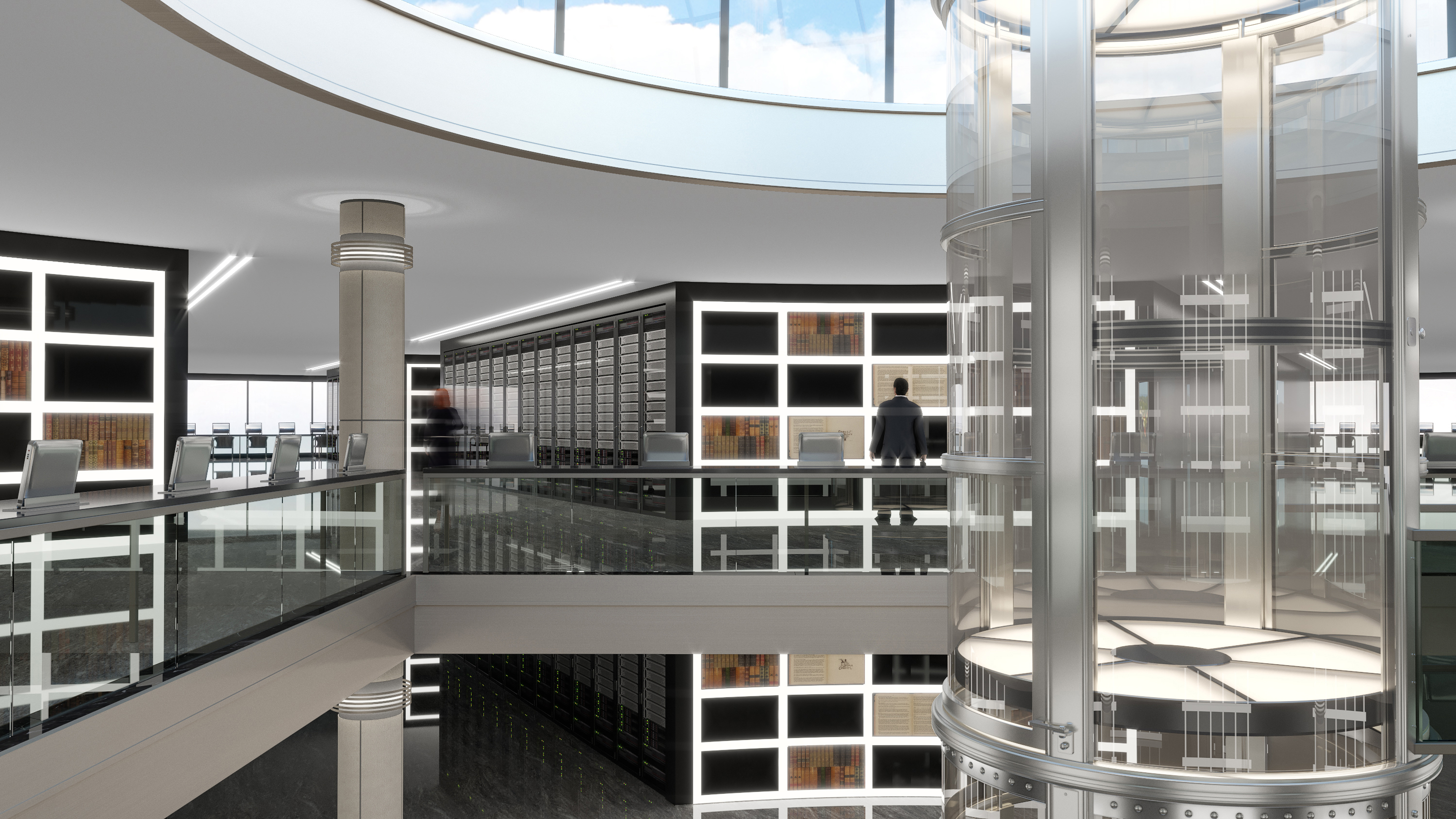The idea of the project is to create a personal library for book lovers. Could you describe the design concept and how the design is going to help?
We were interested in the idea of designing an interactive library; it's an interesting project to create a library that offers full authorization, enabling users to make a rapid search for any kind of information. In designing this library, we were setting out the ‘Library of the Future’ where information will be centralised for many years.
We envisage libraries on this scale in every major city, and all with the same design. This will be a vast data resource, offering texts from Ancient Egyptian papyruses to the latest trends in modern art. The future will be the speed of thought, and time that will increasingly never suffice.
Today, we spend hours researching reliable, high-quality information, but in this ‘Library of the Future’ we will only require an equivalent of five minutes.
How are the books stored, and how does the system work for users looking for them?
Physically, the books will be stored in book-storage units. The library as a whole operates as a vast electronic information bank. All of the books will have been transcribed into electronic versions, and located around the building’s floors according to primary themes – theology on the top floor, art on the penultimate floor, and so forth in this layout downwards.
There will be 15 floors altogether. Visitors will arrive in a central lobby space, where they will enter a capsule lift. They can enter the information they are searching for on the monitor inside the lift. The lift will then carry them to the right floor and section for the information needed, and a transparent bridge will lead them to the section where the spine of the book itself is located.
By inserting a card, the information is transferred to the visitor's computer; if they need to do their work in the library itself, they can do so in allocated workspaces on each floor.
We wanted to retain the appearance of the actual books, so we've left an imprint image of each original book on the monitors.
Modern technology is killing the feelings of warmth and touch we get from books, and these feelings are among the most valuable and alluring in life.













 Back
Back
